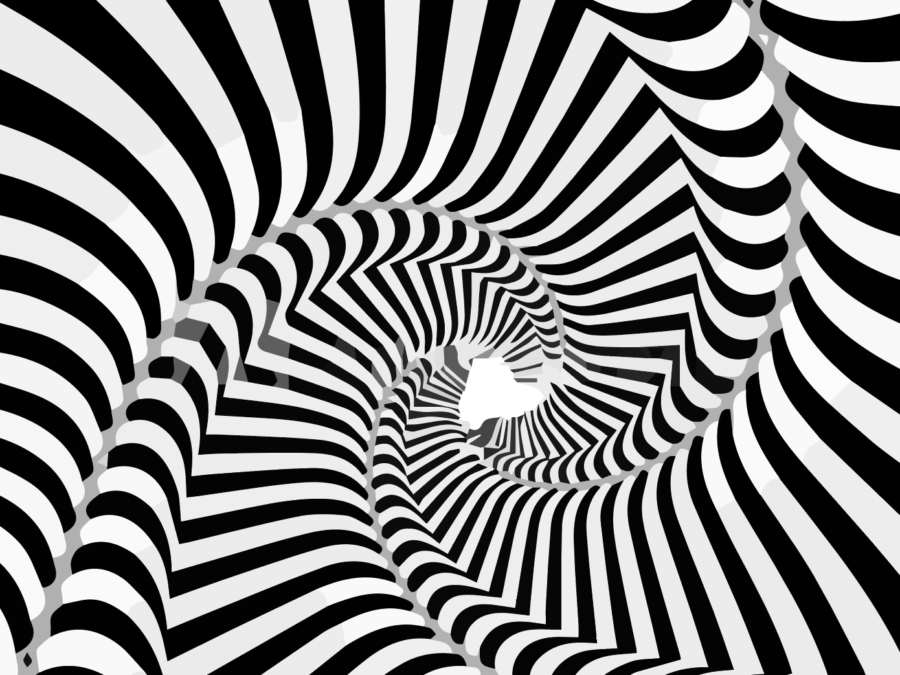Opinion: Your ‘museum’ selfie is not art
This March, I payed $25 to visit the Museum of 3D Illusions, San Francisco’s latest Instagram-worthy art pop-up. Visitors crowded around elaborate murals in a low-ceilinged warehouse across from Fisherman’s Wharf, posing and holding out their phones at different angles to snap selfies. Once the image was captured on a phone, the wall mural transformed into a three-dimensional picture with the visitor as the central subject. Signs throughout the museum advised visitors on the perfect angle to hold one’s phone and encouraged sharing the images on Instagram and Facebook. As I walked through the warehouse space, I noticed frantic visitors trying to capture the perfect image, tilting their heads just so, sucking in their cheeks and opening their eyes wide.
When comparing my experience at the Museum of 3D Illusions and a recent visit to the de Young Fine Arts Museum of San Francisco, I realized that, while the Museum of 3D Illusions requires the viewers’ participation by making them the subject of the art, it is not the kind of participation that traditional museums demand. Rather than reflect critically on our culture or emotionally engage with the art, visitors at these Instagram museums are encouraged to focus on their own appearance on their phones and create a selfie worthy of sharing.
Opened in February, the Museum of 3D Illusions joined the fast-growing and ever-changing number of Instagram-worthy museums around San Francisco. Spaces like the Museum of Ice Cream, the Color Factory, Candytopia and 29Rooms—which all claim to be popup museums—are some of the recent San Francisco art spaces that have attracted thousands of visitors in the past year. Unlike these other “photograph friendly” museums, the full effect of the exhibits at the Museum of 3D Illusions can only be seen through a smartphone lens. Perhaps since the 3D illusions are only visible in a photograph, I found that simply posing in front of the murals did not feel like the “immersive adventure” advertised on their website. The disconnect between my experience inside the museum and my photos of the museum helped articulate my discomfort with labeling this as a trip to a real art museum: my photos were a way for me to prove that I had an experience when, in reality, the experience itself was taking photos to prove that I was having an experience.
As Belle Davis ‘19 explained after visiting the San Francisco Color Factory, which received more than 170,000 visitors during its nine-month run, “[the photographs] were like getting a certificate for something that you didn’t do since the reality of what you’re doing in there is less real than the evidence that you take out of it.”
These new “interactive museums” are more backdrops than art, specifically tailored to garner likes on social media rather than the introspective reflection that true art inspires. Rowan Kruger ‘21 said that after visiting Candytopia this past year, she “…felt like the major point of going to the exhibits was to take the right picture of myself.”
Legitimate museums, like the San Francisco MOMA and de Young Museum of Fine Arts, are places that make us think critically and examine something outside of our own worlds. In contrast, the art that one takes away from visiting one of these new art pop-ups is the photographs of oneself with the backdrop of the exhibit. As Marissa G. Muller described in an article in W Fashion Magazine, these museums “cater to our collective narcissism” to great effect.
Museum goers pay not only the steep price of admission, but also buy overpriced plastic and plush momentos. From rainbow umbrellas at the Color Factory to bright unicorn stuffies at the Museum of Ice Cream, many of San Francisco’s most popular “interactive museums” have corporate sponsorships and according to many accounts, advertisements are pervasive throughout the exhibits. For example, “in some of the rooms [at the Color Factory], the colors that they were espousing were represented through the products of different companies which you could then purchase,” Davis said.
Unlike what one would normally think of as a museum, these museums are profit focused. In an interview with MarketWatch Maryellis Bunn, the founder of the Museum of Ice Cream, said “we’re not only creating a new business, but really a billion-dollar industry—it’s an entirely new industry.”
Although some may argue that these interactive museums allow people who would not normally enjoy a traditional museum to appreciate art, the very labeling of these places as museums is a misnomer. In contrast to the Merriam Webster definition of a museum as “an institution devoted to the procurement, care, study, and display of objects of lasting interest or value,” these art pop-ups do not display art that is of greater interest than the time it takes to scroll through someone’s new Instagram posts. As Davis explains, “museums are supposed to be repositories of knowledge and of culture, and I don’t think there’s really culture in these places.”
Unlike Davis, I think these “museums” are places of culture, just not a kind of culture that enriches us. Instead of challenging one’s perceptions, visitors of these for-profit, interactive museums are buying a memory of an experience of fun that they never had. The purpose of these “museums” is to project an idealized image of ourselves into the world, an image of a beautiful and fun-loving self that is bought rather than experienced. These “museums” reflect and encourage the narcissistic, image-obsessed culture that we live in, reducing an artistic experience to one which commodifies art. As we snap and share the image of an experience we never really had, we turn ourselves into the true product that these museums are selling.
People can enjoy being covered in plastic sprinkles and obsess over the perfect pose for their next Instagram post in a bright yellow ball pit, but it is simply wrong to label this as an artistic experience or an experience in a real museum.












